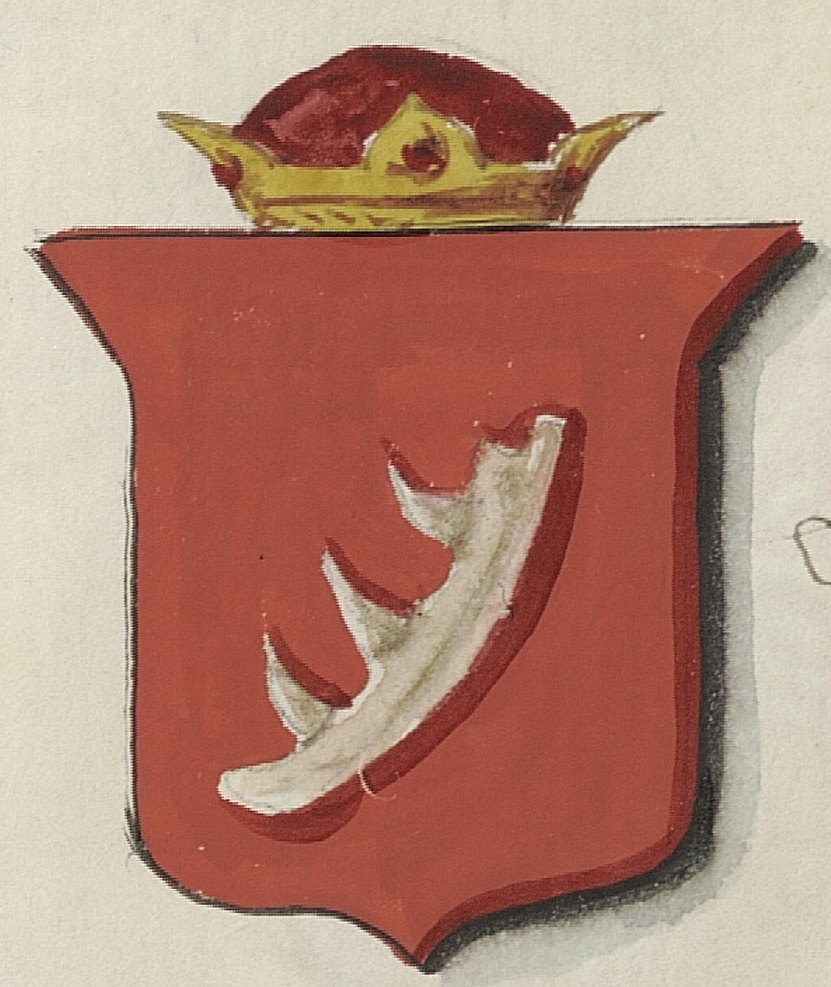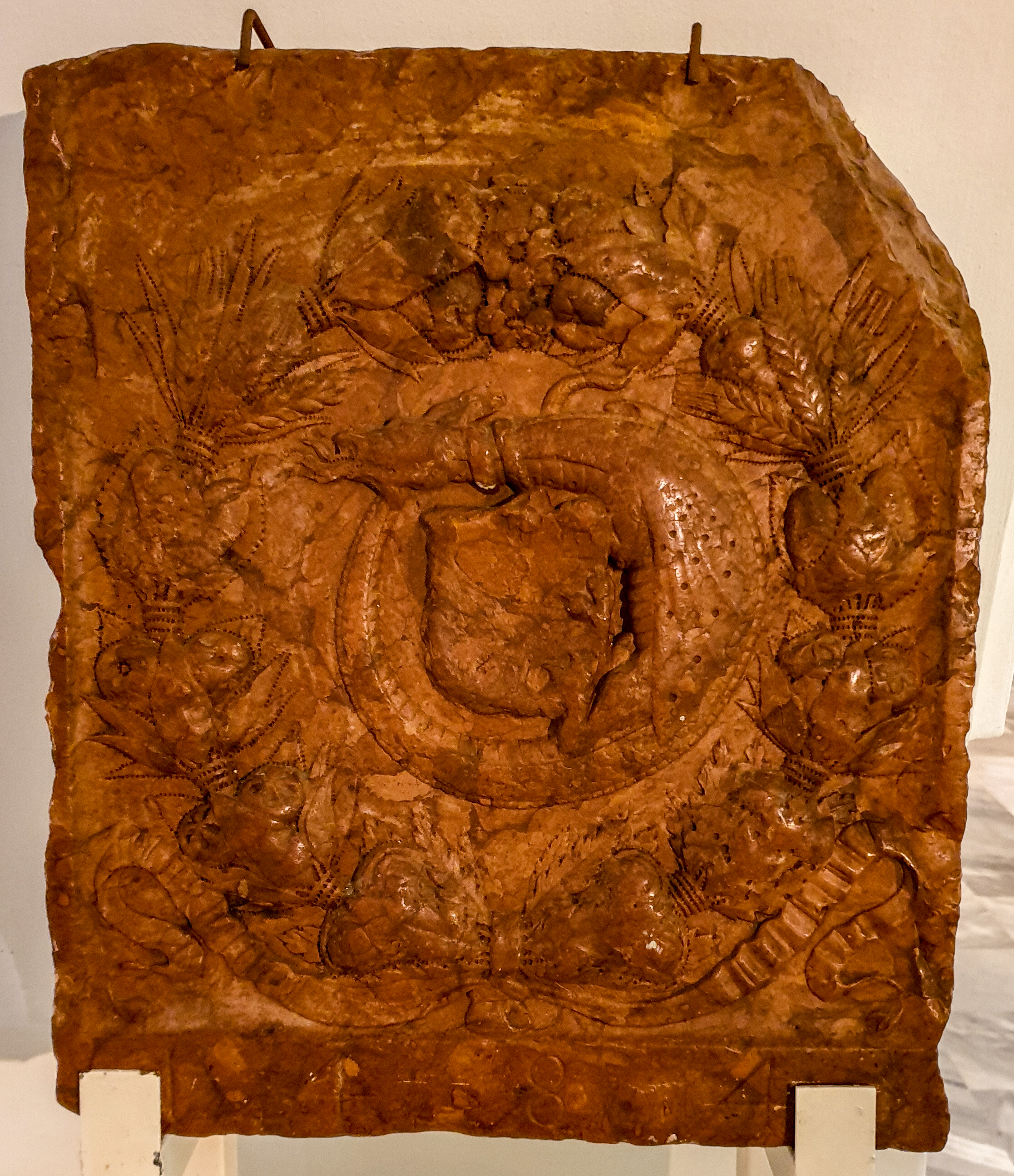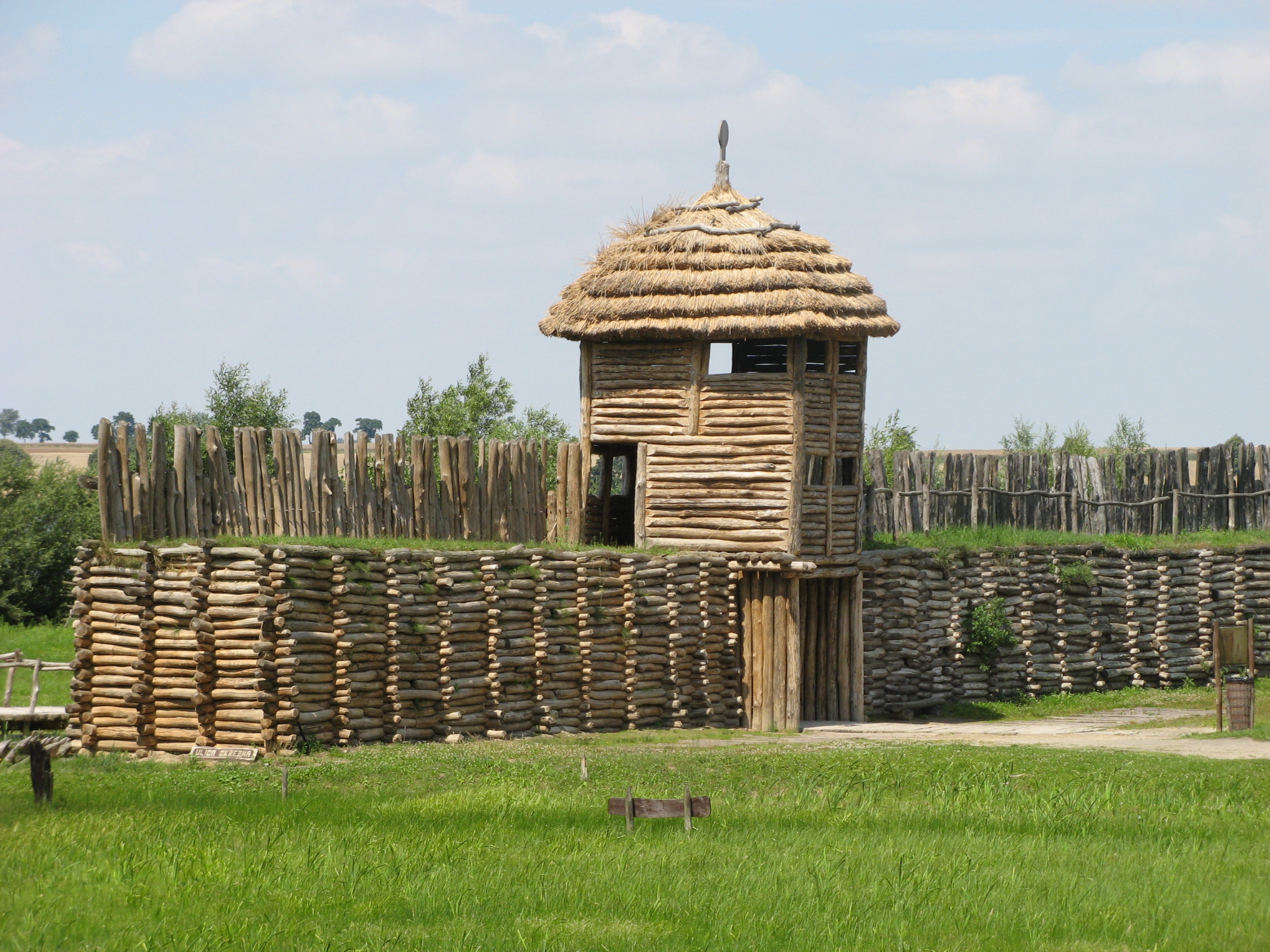|
Stephen Báthory
Stephen Báthory ( hu, Báthory István; pl, Stefan Batory; ; 27 September 1533 – 12 December 1586) was Voivode of Transylvania (1571–1576), Prince of Transylvania (1576–1586), King of Poland and Grand Duke of Lithuania (1576–1586). The son of Stephen VIII Báthory and a member of the Hungarian Báthory noble family, Báthory was a ruler of Transylvania in the 1570s, defeating another challenger for that title, Gáspár Bekes. In 1576 Báthory became the husband of Queen Anna Jagiellon and the third elected king of Poland. He worked closely with chancellor Jan Zamoyski. The first years of his reign were focused on establishing power, defeating a fellow claimant to the throne, Maximilian II, Holy Roman Emperor, and quelling rebellions, most notably, the Danzig rebellion. He reigned only a decade, but is considered one of the most successful kings in Polish history, particularly in the realm of military history. His signal achievement was his victorious c ... [...More Info...] [...Related Items...] OR: [Wikipedia] [Google] [Baidu] |
Martin Kober
Martin Kober (also ''Chober, Cober, Coeber, Khober, Koeber, Koebner'', pl, Marcin Kober) (ca. 1550 – before 1598) was a portrait painter and court painter to different Central European monarchs - King Stephen Báthory, Rudolf II, Holy Roman Emperor, Queen Anna Jagiellon and King Sigismund III Vasa, active mainly in the Polish–Lithuanian Commonwealth. Life Kober was born in Wrocław then known as Breslau, Silesia. Trained as a guild painter, he traveled through Germany for three years as a wandering journeyman to gain experience in different workshops. In 1583 he came to the Polish–Lithuanian Commonwealth from Magdeburg and become court painter of King Stephen Báthory and Queen Anna Jagiellon. He was appointed the royal ''servitor'' and at the court he met his wife Dorothea, also a painter specializing in painting crests. After the King's death he returned to Wrocław, from where he joined the Imperial court of Rudolf II in Prague as a portrait painter, due to the conf ... [...More Info...] [...Related Items...] OR: [Wikipedia] [Google] [Baidu] |
Báthory Family
The Báthory family ( pl, Batory) was a Hungarian noble family of the Gutkeled clan. The family rose to significant influence in Central Europe during the Late Middle Ages, holding high military, administrative and ecclesiastical positions in the Kingdom of Hungary. In the early modern period, the family brought forth several Princes of Transylvania and one King of Poland and Grand Duke of Lithuania (Stephen Báthory). Origins The Báthory family belonged to the '' Gutkeled'', a clan of Hungarian nobles, which traced its descent to the Swabian brothers ''Gut'' and ''Kelad'', who immigrated into Hungary from the castle ''Stof'' (probably Staufen im Breisgau or Hohenstaufen in Württemberg) during the reign of King Peter (reigned 1038–1046), who himself was partly of Venetian descent.Simon Kezai, Lázló Veszprémy, Frank Schaer (ed.), ''Gesta Hungarorum: The Deeds of the Hungarians'' (Central European Medieval Texts). Central European University Press, 1999. In 1279 ... [...More Info...] [...Related Items...] OR: [Wikipedia] [Google] [Baidu] |
Polish History
The history of Poland spans over a thousand years, from medieval tribes, Christianization and monarchy; through Poland's Golden Age, expansionism and becoming one of the largest European powers; to its collapse and partitions, two world wars, communism, and the restoration of democracy. The roots of Polish history can be traced to ancient times, when the territory of present-day Poland was settled by various tribes including Celts, Scythians, Germanic clans, Sarmatians, Slavs and Balts. However, it was the West Slavic Lechites, the closest ancestors of ethnic Poles, who established permanent settlements in the Polish lands during the Early Middle Ages.. The Lechitic Western Polans, a tribe whose name means "people living in open fields", dominated the region and gave Poland - which lies in the North-Central European Plain - its name. The first ruling dynasty, the Piasts, emerged in the 10th century AD. Duke Mieszko I is considered the ''de facto'' creator of the Pol ... [...More Info...] [...Related Items...] OR: [Wikipedia] [Google] [Baidu] |
Monarchs Of Poland
A monarch is a head of stateWebster's II New College DictionarMonarch Houghton Mifflin. Boston. 2001. p. 707. for life or until abdication, and therefore the head of state of a monarchy. A monarch may exercise the highest authority and power in the state, or others may wield that power on behalf of the monarch. Usually a monarch either personally inherits the lawful right to exercise the state's sovereign rights (often referred to as ''the throne'' or ''the crown'') or is selected by an established process from a family or cohort eligible to provide the nation's monarch. Alternatively, an individual may proclaim themself monarch, which may be backed and legitimated through acclamation, right of conquest or a combination of means. If a young child is crowned the monarch, then a regent is often appointed to govern until the monarch reaches the requisite adult age to rule. Monarchs' actual powers vary from one monarchy to another and in different eras; on one extreme, they may ... [...More Info...] [...Related Items...] OR: [Wikipedia] [Google] [Baidu] |
Danzig Rebellion
The rebellion of the city of Danzig (Gdańsk) was a revolt from December 1575 to December 1577 of the city against the outcome of the 1576 Polish–Lithuanian royal election. The Polish throne was contested by Stephen Báthory and the Holy Roman Emperor Maximillian II. It began on 12 December 1575, when Emperor Maximillian was chosen as monarch by the Polish Senate, while the majority of the szlachta (nobility) had voted for Bathory. It ended on 16 December 1577. Maximilian's II death in fall of 1576 weakened Danzig's position and made the conflict less about the recognition of the ruler than about Danzig's privileges. With neither side being able to defeat the other militarily, a compromise was reached, with economic as well as religious privileges of the city being restored and recognized, in return for a large reparation and recognition of Bathory as Grand Duke of western Prussia. Danzig made its oath conditional on the removal of the Statute of the Karnkowski commission of 1 ... [...More Info...] [...Related Items...] OR: [Wikipedia] [Google] [Baidu] |
Maximilian II, Holy Roman Emperor
Maximilian II (31 July 1527 – 12 October 1576) was Holy Roman Emperor from 1564 until his death in 1576. A member of the Austrian House of Habsburg, he was crowned King of Bohemia in Prague on 14 May 1562 and elected King of Germany ( King of the Romans) on 24 November 1562. On 8 September 1563 he was crowned King of Hungary and Croatia in the Hungarian capital Pressburg (Pozsony in Hungarian; now Bratislava, Slovakia). On 25 July 1564 he succeeded his father Ferdinand I as ruler of the Holy Roman Empire. Maximilian's rule was shaped by the confessionalization process after the 1555 Peace of Augsburg. Though a Habsburg and a Catholic, he approached the Lutheran Imperial estates with a view to overcome the denominational schism, which ultimately failed. He also was faced with the ongoing Ottoman–Habsburg wars and rising conflicts with his Habsburg Spain cousins. According to Fichtner, Maximilian failed to achieve his three major aims: rationalizing the governmen ... [...More Info...] [...Related Items...] OR: [Wikipedia] [Google] [Baidu] |
Jan Zamoyski
Jan Sariusz Zamoyski ( la, Ioannes Zamoyski de Zamoscie; 19 March 1542 – 3 June 1605) was a Polish nobleman, magnate, and the 1st '' ordynat'' of Zamość. He served as the Royal Secretary from 1565, Deputy Chancellor from 1576, Grand Chancellor of the Crown from 1578, and Great Hetman of the Crown from 1581. Zamoyski was the General Starost of the city of Kraków from 1580 to 1585, Starost of Bełz, Międzyrzecz, Krzeszów, Knyszyn and Tartu. An important advisor to Kings Sigismund II Augustus and Stephen Báthory, he was one of the major opponents of Bathory's successor, Sigismund III Vasa, and one of the most skilled diplomats, politicians and statesmen of his time, standing as a major figure in the politics of the Polish–Lithuanian Commonwealth throughout his life. Biography Childhood and education Jan Zamoyski was born on 19 March 1542 to Stanisław Zamoyski and Anna Herburt in Skokówka. He started his education in a school in Krasnystaw but when he was ... [...More Info...] [...Related Items...] OR: [Wikipedia] [Google] [Baidu] |
Royal Election
Royal may refer to: People * Royal (name), a list of people with either the surname or given name * A member of a royal family Places United States * Royal, Arkansas, an unincorporated community * Royal, Illinois, a village * Royal, Iowa, a city * Royal, Missouri, an unincorporated community * Royal, Nebraska, a village * Royal, Franklin County, North Carolina, an unincorporated area * Royal, Utah, a ghost town * Royal, West Virginia, an unincorporated community * Royal Gorge, on the Arkansas River in Colorado * Royal Township (other) Elsewhere * Mount Royal, a hill in Montreal, Canada * Royal Canal, Dublin, Ireland * Royal National Park, New South Wales, Australia Arts, entertainment, and media * ''Royal'' (Jesse Royal album), a 2021 reggae album * '' The Royal'', a British medical drama television series * '' The Royal Magazine'', a monthly British literary magazine published between 1898 and 1939 * ''Royal'' (Indian magazine), a men's lifestyle bimonth ... [...More Info...] [...Related Items...] OR: [Wikipedia] [Google] [Baidu] |
Gáspár Bekes
Gáspár Bekes de Kornyát (also ''Gáspár de Corniath Bekes'', ''Kornyáti Bekes Gáspár'', or ''Kaspar Bekes'', ''Caspar Bekesh''; 1520 – 7 November 1579) was a Hungarian nobleman who fought Stephen Báthory for the throne of Transylvania after the death of John II Sigismund Zápolya in 1571. Allied with Maximilian II, Holy Roman Emperor, and the Székelys, Bekes organized two rebellions against Báthory, but was defeated. After Báthory became King of Poland and Grand Duke of Lithuania in 1576, Bekes reconciled with Báthory, becoming his close adviser. Bekes also fought in the Danzig rebellion and the Livonian War. Rivalry with Báthory Bekes was treasurer for John II Sigismund Zápolya, King of Hungary (died 1571), and gained considerable power and favor with him. In his testament, Zápolya, who had no legal heir, designated Bekes as Voivode of Transylvania. However, the Hungarian nobles did not honor the will and elected Stephen Báthory as their voivode while Bekes was ... [...More Info...] [...Related Items...] OR: [Wikipedia] [Google] [Baidu] |
Transylvania
Transylvania ( ro, Ardeal or ; hu, Erdély; german: Siebenbürgen) is a historical and cultural region in Central Europe, encompassing central Romania. To the east and south its natural border is the Carpathian Mountains, and to the west the Apuseni Mountains. Broader definitions of Transylvania also include the western and northwestern Romanian regions of Crișana and Maramureș, and occasionally Banat. Transylvania is known for the scenery of its Carpathian landscape and its rich history. It also contains Romania's second-largest city, Cluj-Napoca, and other iconic cities and towns such as Brașov, Sibiu, Târgu Mureș, Alba Iulia and Sighișoara. It is also the home of some of Romania's UNESCO World Heritage Sites such as the Villages with fortified churches, the Historic Centre of Sighișoara, the Dacian Fortresses of the Orăștie Mountains and the Roșia Montană Mining Cultural Landscape. It was under the rule of the Agathyrsi, part of the Dacian Kingd ... [...More Info...] [...Related Items...] OR: [Wikipedia] [Google] [Baidu] |
Voivode Of Transylvania
The Voivode of Transylvania (german: Vojwode von Siebenbürgen;Fallenbüchl 1988, p. 77. hu, erdélyi vajda;Zsoldos 2011, p. 36. la, voivoda Transsylvaniae; ro, voievodul Transilvaniei) was the highest-ranking official in Transylvania within the Kingdom of Hungary from the 12th century to the 16th century. Appointed by the monarchs, the voivodesthemselves also the heads or '' ispáns'' of Fehér Countywere the superiors of the ''ispáns'' of all the other counties in the province. They had wide-ranging administrative, military and judicial powers, but their jurisdiction never covered the whole province. The Saxon and Székely communitiesorganized into their own districts or " seats" from the 13th centurywere independent of the voivodes. The kings also exempted some Transylvanian towns and villages from their authority over the centuries. Even so, the Voivodeship of Transylvania "was the largest single administrative entity"Jefferson 2012, p. 142. in t ... [...More Info...] [...Related Items...] OR: [Wikipedia] [Google] [Baidu] |






